Sailing the Old Fox
The Underground Railroad, Adena Culture and Lenape
I’m back at home after a beautiful weekend sailing down south on Alum Creek Reservoir, just north of Columbus, Ohio. Saturday dawned bright and beautiful, the fall colors just starting to peak.
The Alum Creek Sailing Club sits in a cove just off the main lake, surrounded by the Alum Creek State Park.
The Creek was dammed in 1970 as part of the 1962 Flood Relief Act, covering the remains of an early African American settlement along the creek. These people came north on the Underground Railroad, crossing the Ohio River in their escape from Slavery to Freedom.
Above: 1898 map, "Routes of the Underground Railroad." The Underground Railroad was not an actual railroad, but a network of secret routes and safe houses used by black slaves in the United States to escape to free states and Canada.
Here’s a closer view:
I want to do some more research on this early settlement. The road that runs along the eastern shore of the reservoir is still called Africa Road.
But of course the first people here were not from Africa. The first evidence of humans that we have here is from the Adena Culture, who built their mysterious mounds from 1000 to 200 BC. The mounds of the Adena’s were part of a complex burial and ceremonial system that is still not fully understood.
Credit Creative Commons.
The next wave of human settlement that we can document here are the Lenape Indians, who settled here after being driven from their ancestral lands along the Delaware River system in Pennsylvania, New York and New Jersey. The Lenape were a relatively peaceful group, preferring to settle disputes diplomatically.
Lenape language area at time of initial European contact. Credit Creative Commons
When they came to the Ohio region they were known as the Delaware, the name of the Ohio town just west of Alum Creek. Here they had corn fields, some as large as 400 acres, but today the only memories of these people are the names of towns, counties and rivers where they farmed, fished and flourished.
Alum Creek flows into the Scioto River, then to the Ohio River 100 miles south, which joins the Mississippi at Cairo, Illinois, the waters finally emptying into the Gulf of Mexico south of New Orleans. The waters of northern Ohio and Michigan drain into the Great Lakes, eventually reaching the Atlantic through the St. Lawrence River.
28 boats in four classes came to the starting line. The Race Committee, featuring PRO Duane and Dar Burgoyne from North Cape, did a fantastic job, running 7 races over the two days.
The best wind was on Sunday. We had about ten knots from the southwest at the start, but by the time we finished our last race it was honking, with puffs over 25 before the wind gauge quit working, dismasting one of the boats.
We ended up in second place by a few points, squeezed out of a win in the last race by only 3 seconds!
Above: Ben and Tom working the foredeck downwind.
On the drive home I thought about why I like sail boat racing so much. There are so many variables to consider: weather, wind direction and strength, wind shifts, sail trim, tactics and strategy. It’s not a sport for perfectionists. And then there’s the joy of camaraderie with your shipmates as you battle the elements and try to best the other boats.
Our Skipper Garry had his boat Griffsail in excellent condition and ready for action. That’s another important thing about sailing. As in many activities, you must be prepared! Here’s the results if you’re interested: Old Fox Regatta, Alum Creek Sailing Assoc.
Thanks Garry and Mates! I had a great time!



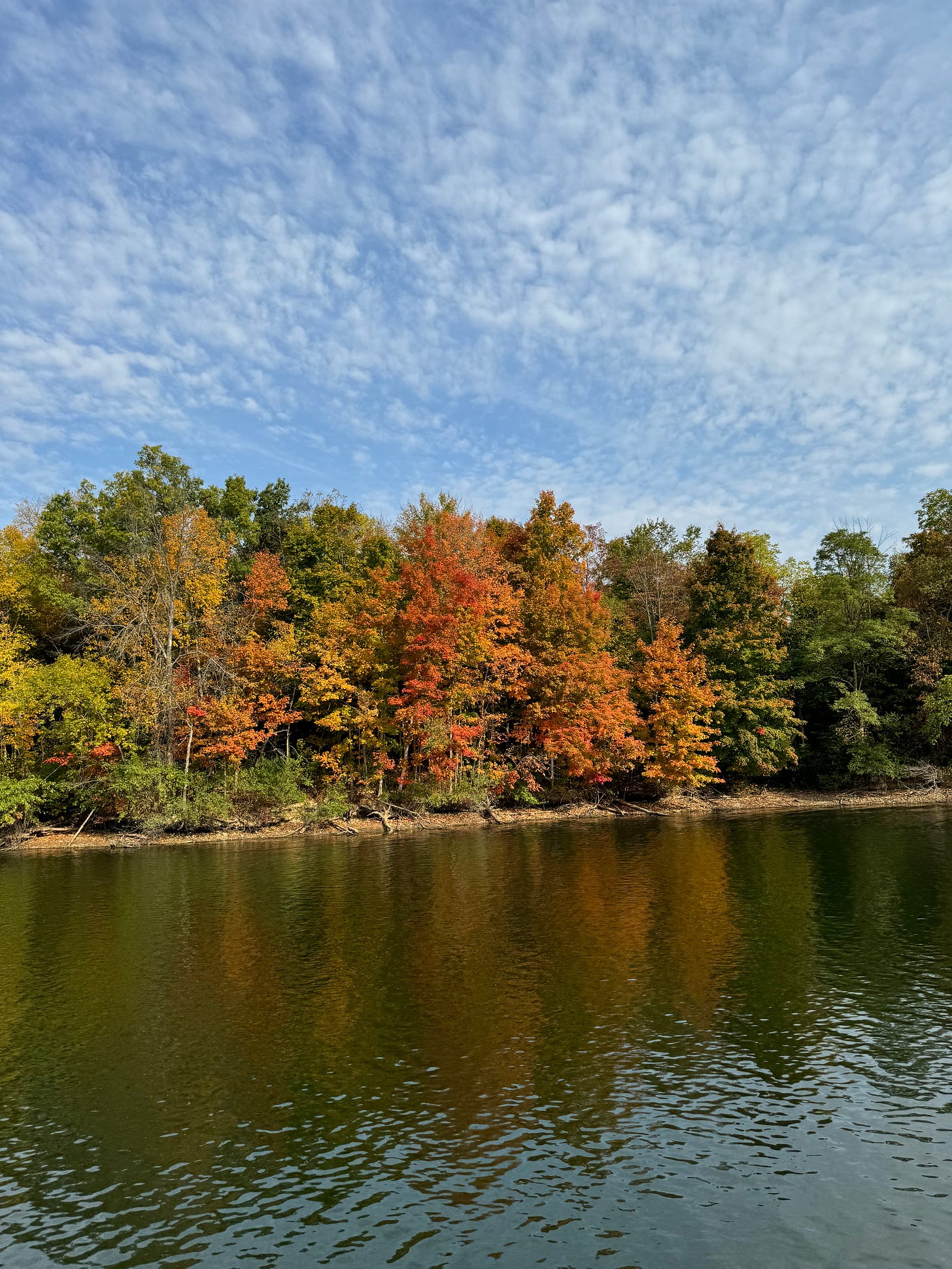
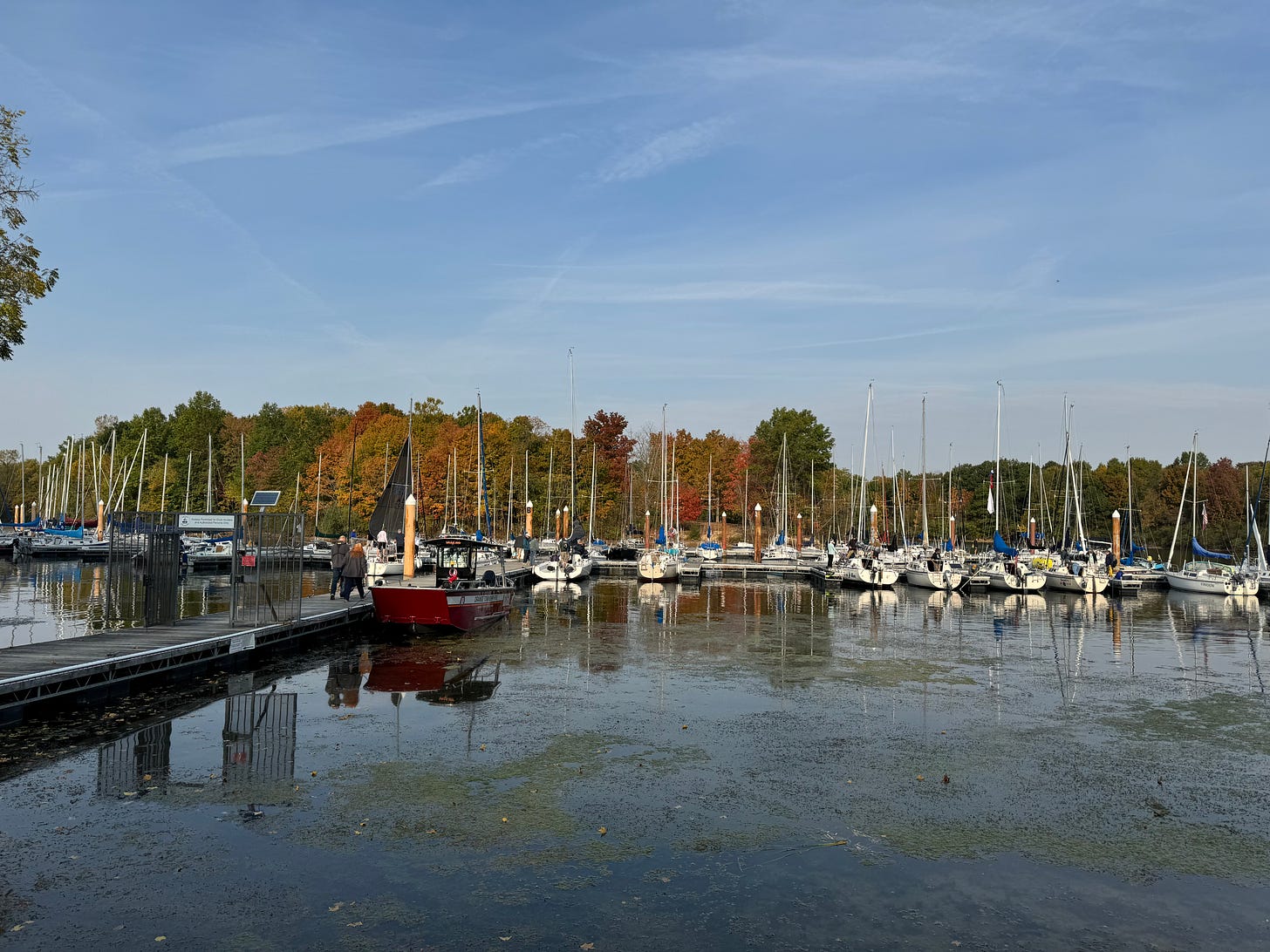
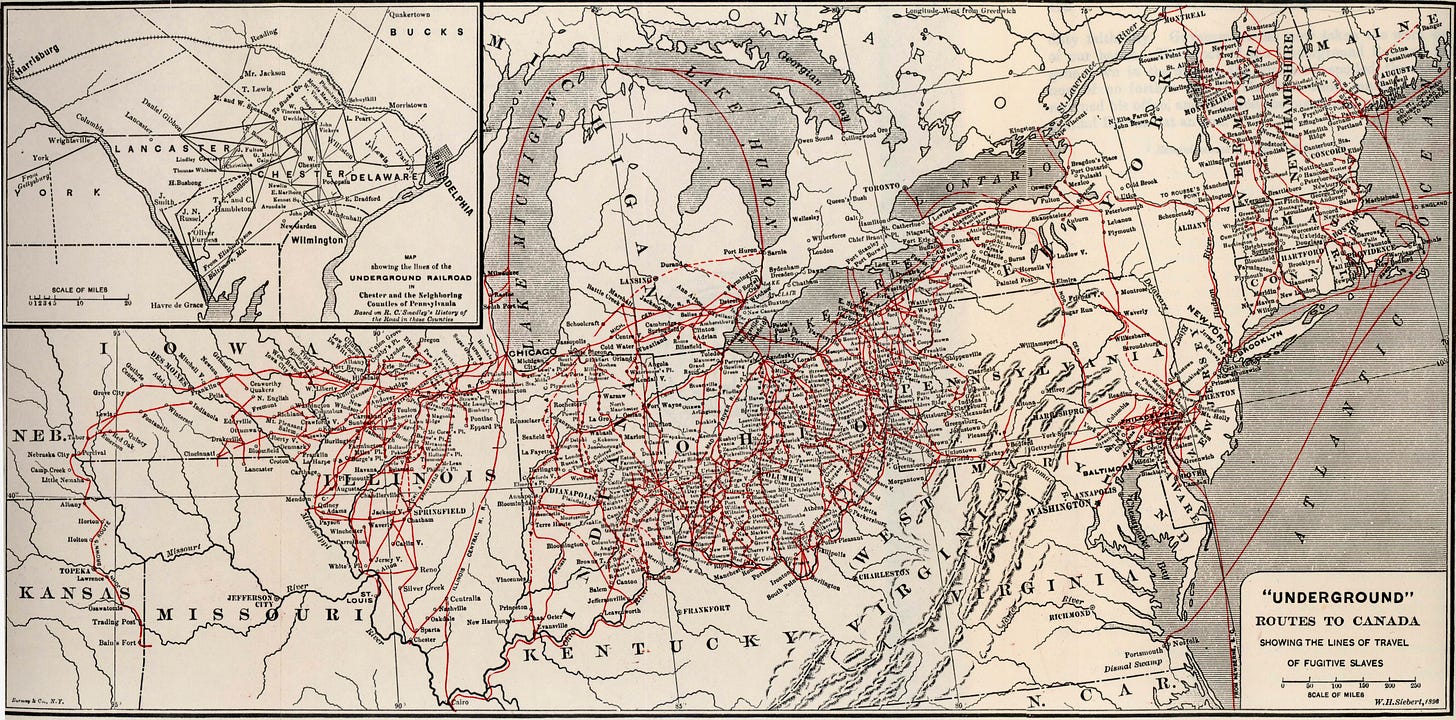
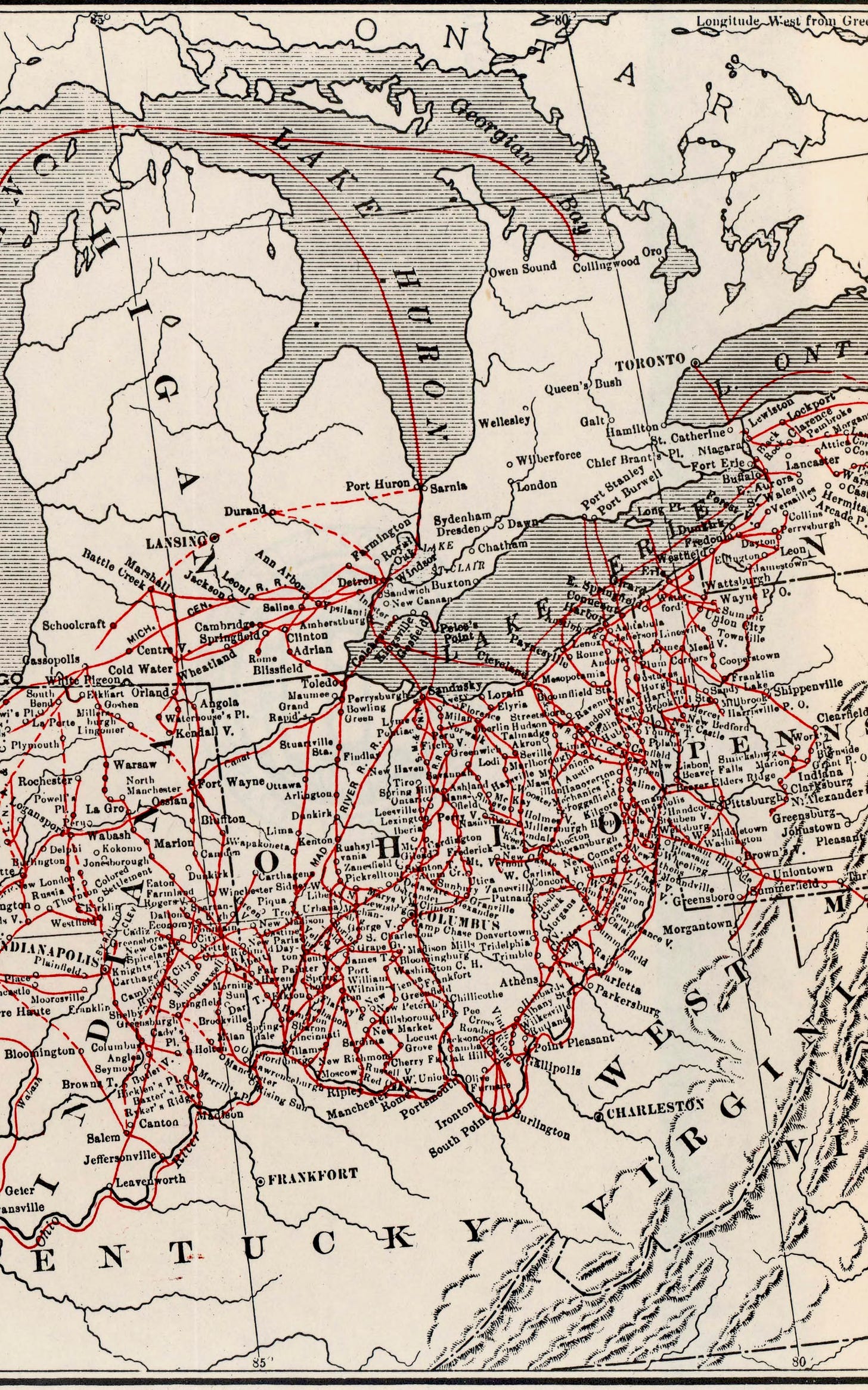
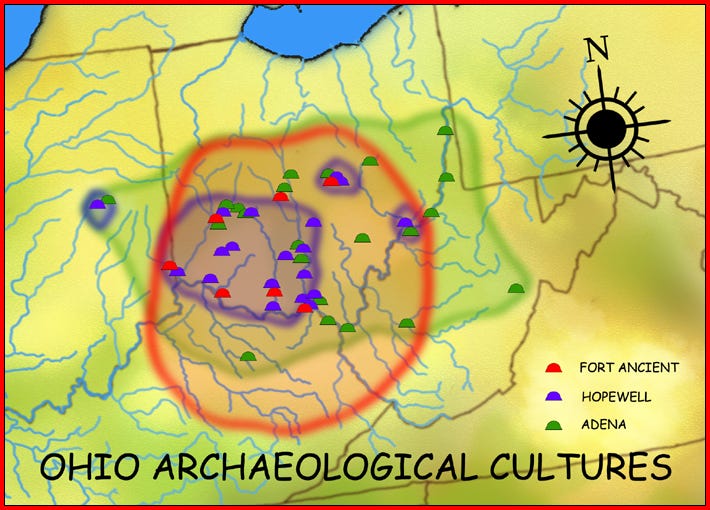
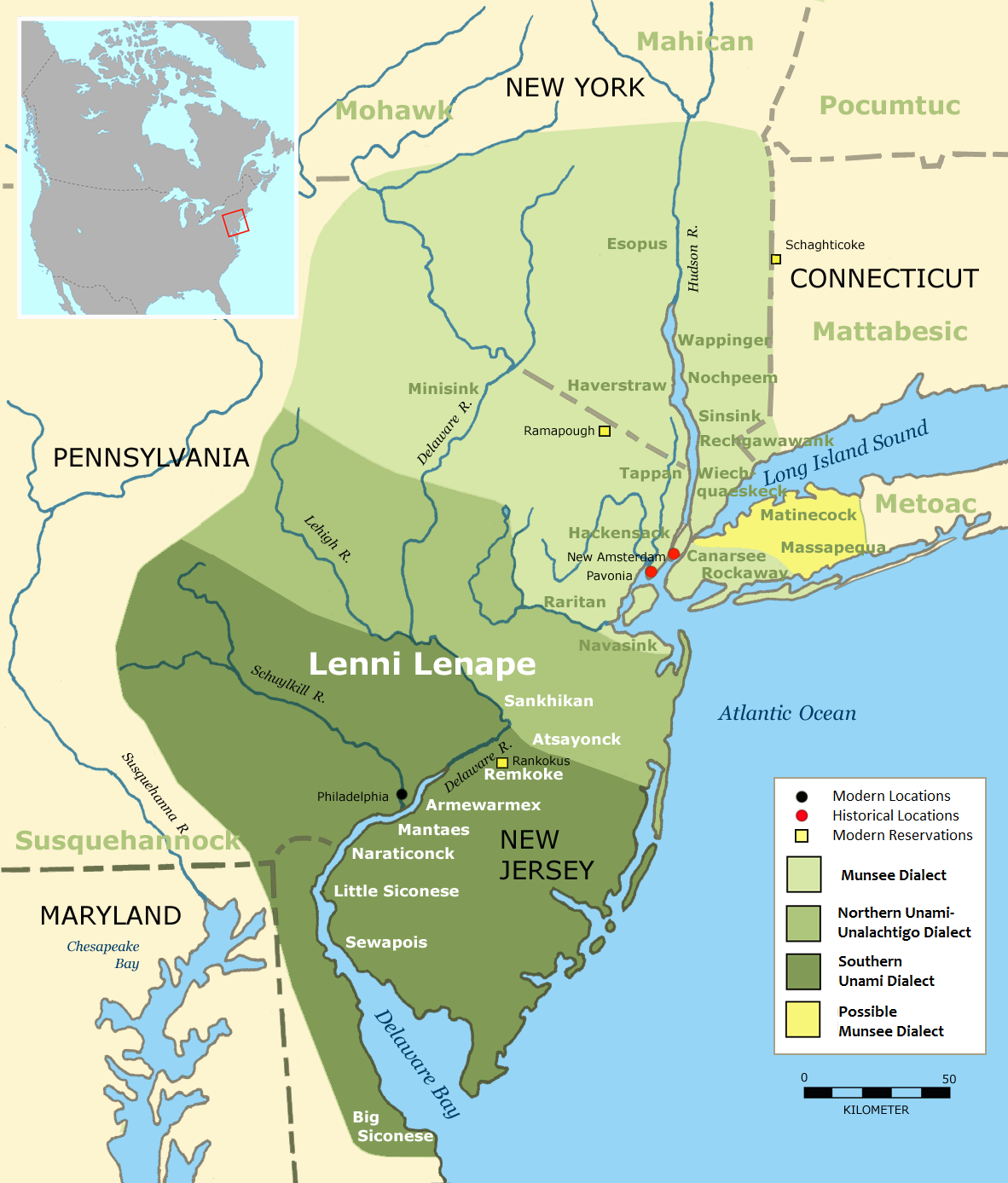
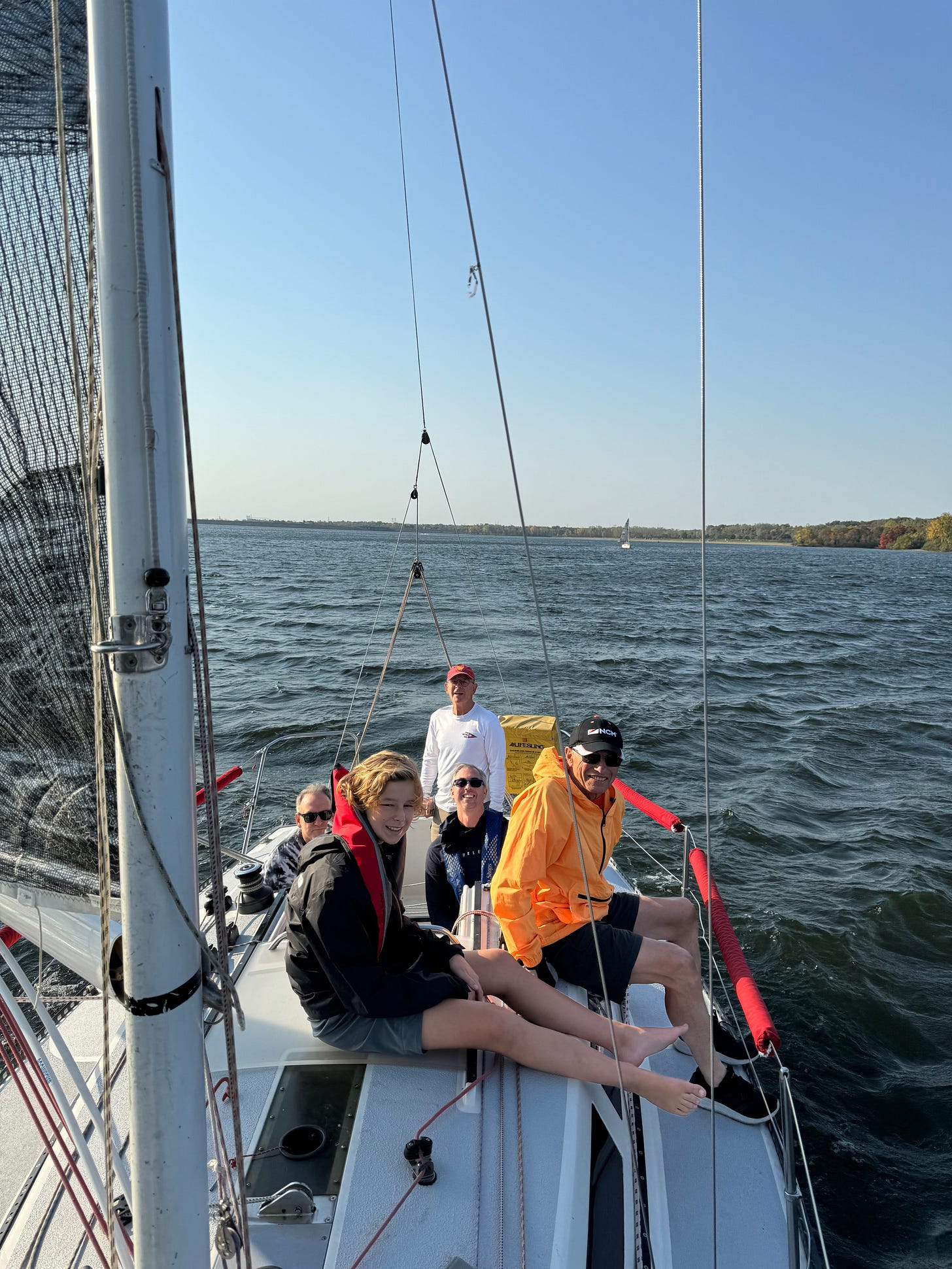
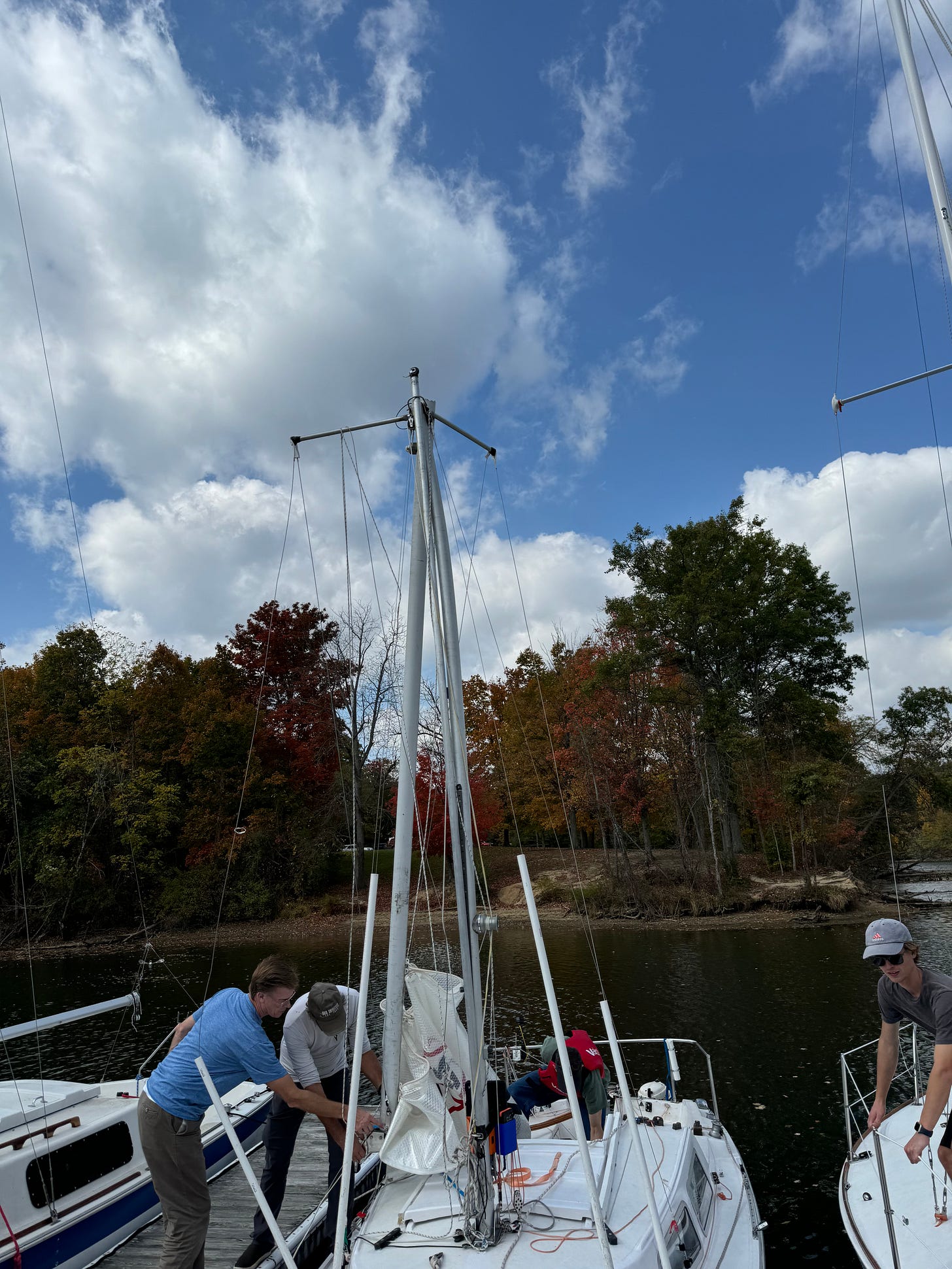
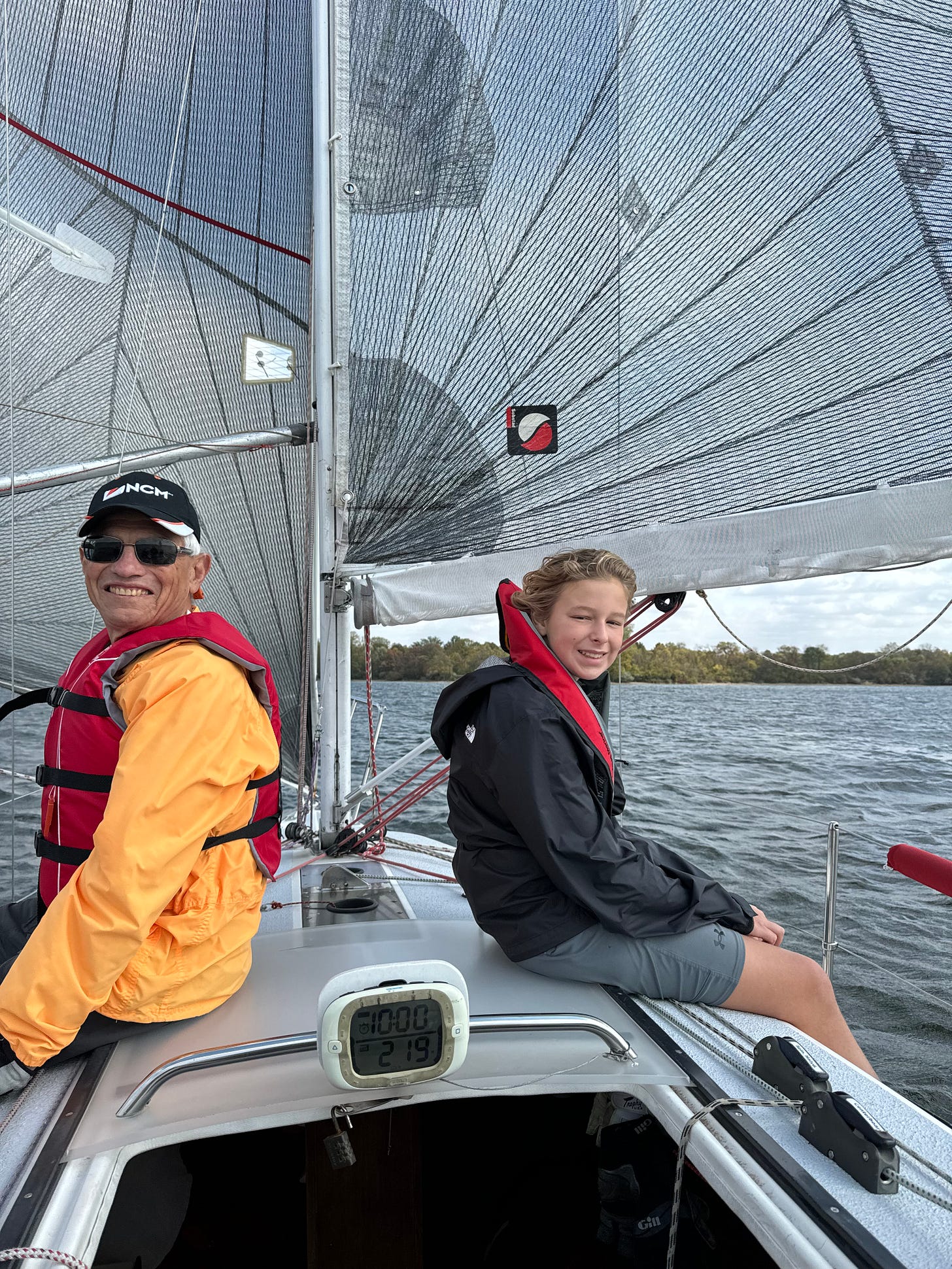
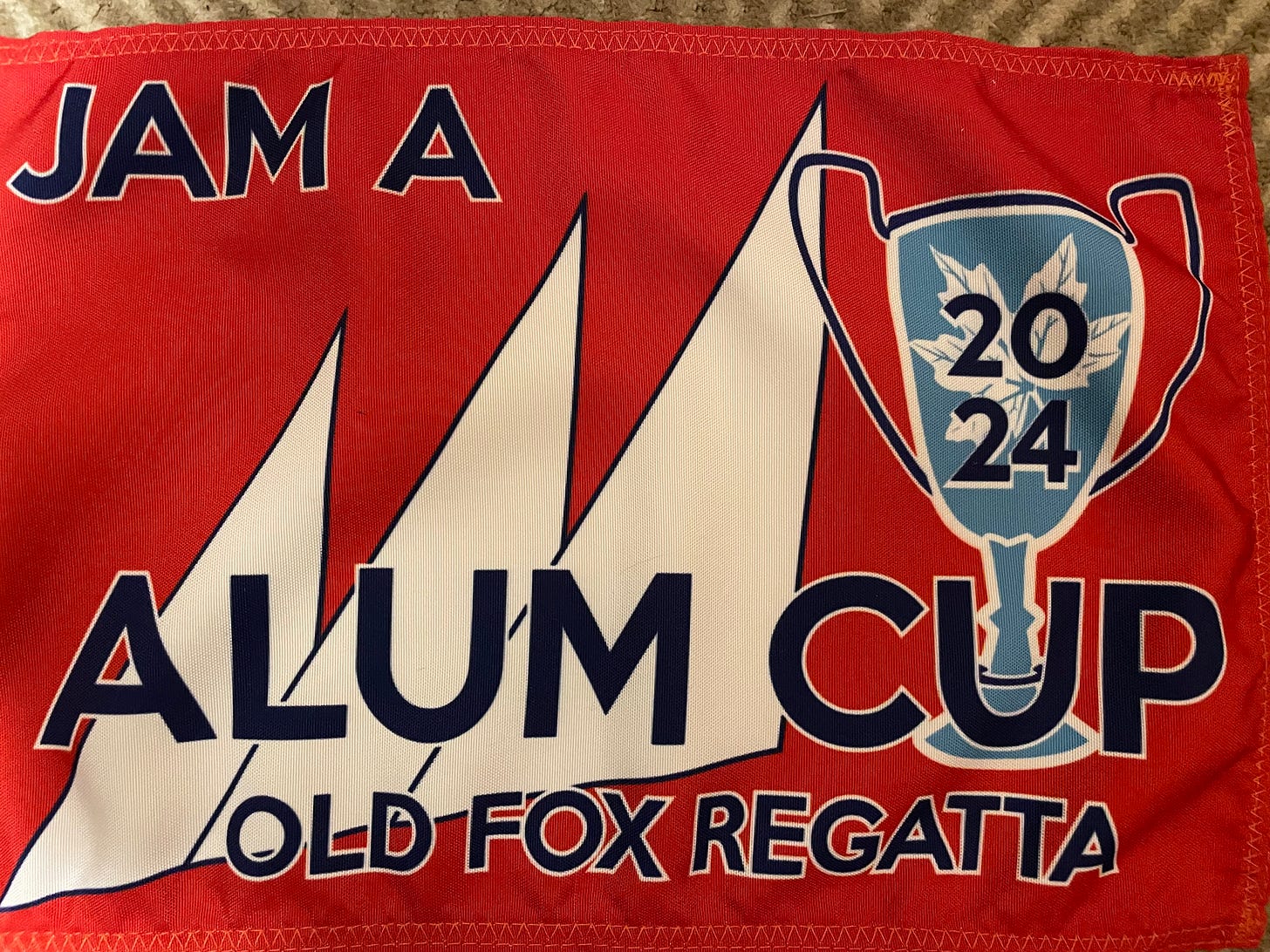
you firmly pushed on a memory button, David. I learn to sail on the Scioto river. I was attending Ohio State University and this was a great way to let off pressure, but it was so much fun. We were sailing small boats as it would be challenging to use anything too large. Lasers and flying juniors. lasers are a blast, well named like rockets. They have the added capability of being righted quickly and easily. Our teacher, who couldn’t swim, showed us how to sink and right a boat the second lesson. Consequently, on those steamy summer afternoons, when it got too hot, we would dump the boats and then ride it again and zip across the river. They’re so good gaining sailor training on the edges of a river, where are the wind shifts in spinning eddies.
Several years later, I was working at UC Irvine and I joined the sailing club. You had to take a class to be able to use the boats to ensure that you knew what you were doing. I went out with a buddy who also sailed. We had an incredible Santa Anna wind day. Unfortunately, we had a newbie in our boat, and when we shot off the pier, both of us hiking, and insisting that our newbie do the same, it was a little too much for him. He didn’t come back. Sad for sure. There’s nothing like the wind. Pulling you along with the sail lofting. even sailing in light winds in a contest is a kick.
Those days on the river in Ohio are vivid in this older mind.
Thanks for the reminder and I know you had a great day on the water.
Greg.
I sailed a couple of times with my brother but nothing on the scale that you sail. He learned to sail one summer at a camp on the east coast. I was sent to a dude ranch for four weeks in Arizona because my parents didn't want my sister to go alone. The boat he had was more of a dingy with a sheet, but we would sail it on a small lake near our home.
Sailing reminds me of farming. You are at the mercy of Mother Nature but at the end you are hoping for a win. Too much rain? The crops would flood. Too much sun? The crops would die. Too much wind? Some crops would get blown over. The outcome is a little different but you still at the mercy of the weather.